
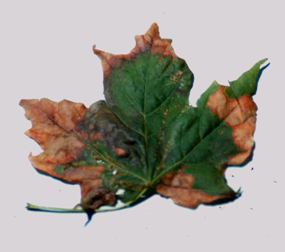
Anthracnose is very common on many types of trees and shrubs. It often occurs on the leaves of ash (left) and maple (right) trees, causing blotchy-brown, dead areas.
What is anthracnose?
Anthracnose is the name of several common fungal diseases that affect the foliage of woody ornamentals in Wisconsin. Trees that are most commonly and severely affected by anthracnose include ash, maple, white oak, sycamore, and walnut. Anthracnose typically affects young leaf tissue.
What does anthracnose look like?
Symptoms of anthracnose vary from host to host, but in general include irregular spots, and dead areas on leaves that often follow the veins of the leaves. Affected tissue can vary in color but is often tan or brown. Severely affected leaves often curl and may fall off. In some tree species, such as sycamore, twigs can also become infected leading to twig dieback.
Where does anthracnose come from?
Anthracnose is caused by several fungi (many historically classified in the genus Gloeosporium) that survive in leaf litter. These fungi are host specific. The anthracnose fungus that infects one type of tree (e.g., ash) is not the same one that infects another type of tree (e.g., maple). However, when anthracnose occurs on one tree, then weather conditions (typically cool and moist conditions) are favorable for development of the disease on many types of trees.

How do I save a tree with anthracnose?
DO NOT panic. For many trees, anthracnose is a cosmetic disease. It may make a tree look a little ragged but will not kill the tree. However, if a tree has been defoliated by anthracnose for several years, or it is a tree, such as a sycamore, where twig infections can occur, then you may want to use a fungicide for disease control. Three treatments are typically needed for adequate control: one at bud break, one when leaves are half expanded, and one when leaves are fully expanded. Fungicides containing copper, chlorothalonil, or mancozeb are registered for anthracnose control in Wisconsin. DO NOT use the same active ingredient for all treatments. Instead, alternate the use of at least two active ingredients to help minimize problems with fungicide-resistant strains of anthracnose fungi. Be sure to read and follow all label instructions of the fungicide(s) that you select to ensure that you use the fungicide(s) in the safest and most effective manner possible.
How do I avoid problems with anthracnose in the future?
You can reduce the number of spores that cause anthracnose infections by removing and disposing of fallen, infected leaves in the autumn. Leaves can be burned (where allowed), buried or composted. When composting, make sure that your compost pile reaches high temperature (approximately 140°F). Also, make sure that your compost pile is routinely turned so that leaves on the outside of the pile eventually end up in the center of the pile. The combination of high temperature and decay of leaf tissue in a compost pile helps eliminate anthracnose fungi. Also, maintain good tree vigor by watering and fertilizing trees appropriately. Check with your local county Extension agent for details on how to properly care for trees.
For more information on anthracnose:
Contact the University of Wisconsin Plant Disease Diagnostics Clinic (PDDC) at (608) 262-2863 or pddc@wisc.edu.
Authors: Brian Hudelson, UW-Madison Plant Pathology
Last Revised: 02/28/2024
D-number: D0002
References to pesticide products in this publication are for your convenience and are not an endorsement or criticism of one product over similar products. You are responsible for using pesticides according to the manufacturer’s current label directions. Follow directions exactly to protect the environment and people from pesticide exposure. Failure to do so violates the law.
Thanks to Laura Jull, Patti Nagai and Amy Sausen for reviewing this document.
A complete inventory of UW Plant Disease Facts is available at the University of Wisconsin-Madison Plant Disease Diagnostics Clinic website: https://pddc.wisc.edu.
Send a Plant Sample for Analysis
Be cautious when self-diagnosing plant health issues. Very few diseases can accurately be diagnosed by eye.
Contact the UW Plant Disease Diagnostics Clinic (PDDC), and for a small fee, clinic staff can examine a plant, determine the cause of the disease/disorder, and provide advice on how to control or prevent the issue.
Download Article





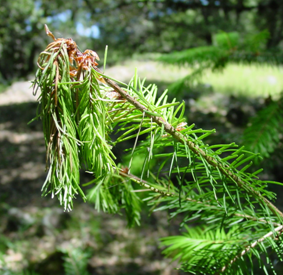 Sudden Oak Death
Sudden Oak Death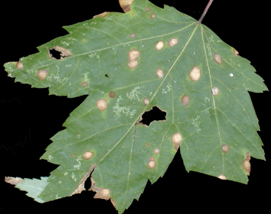 Purple Bordered Leaf Spot
Purple Bordered Leaf Spot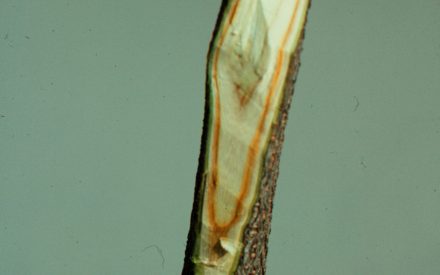 Verticillium Wilt of Trees and Shrubs
Verticillium Wilt of Trees and Shrubs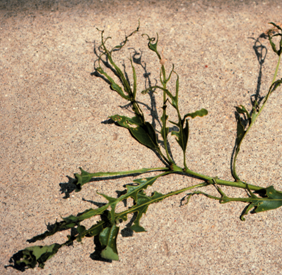 Tatters
Tatters


